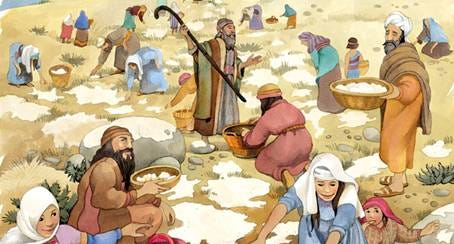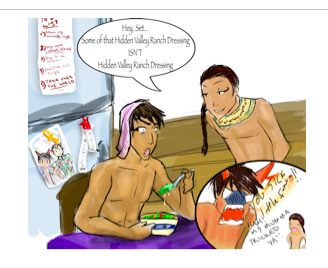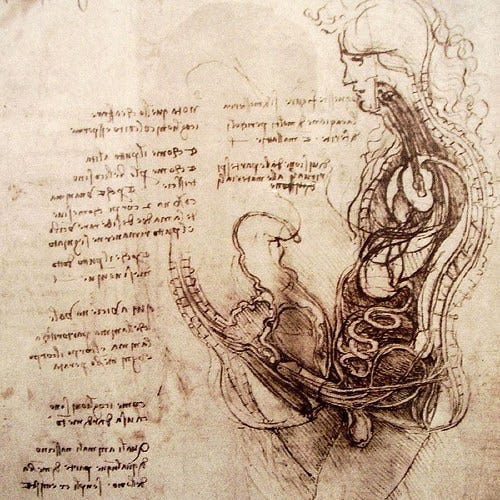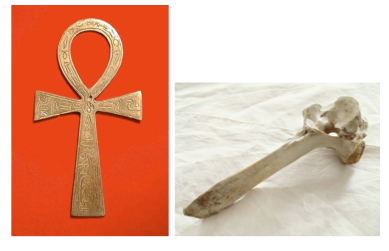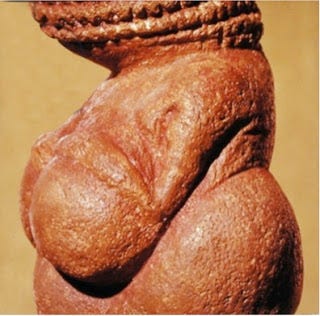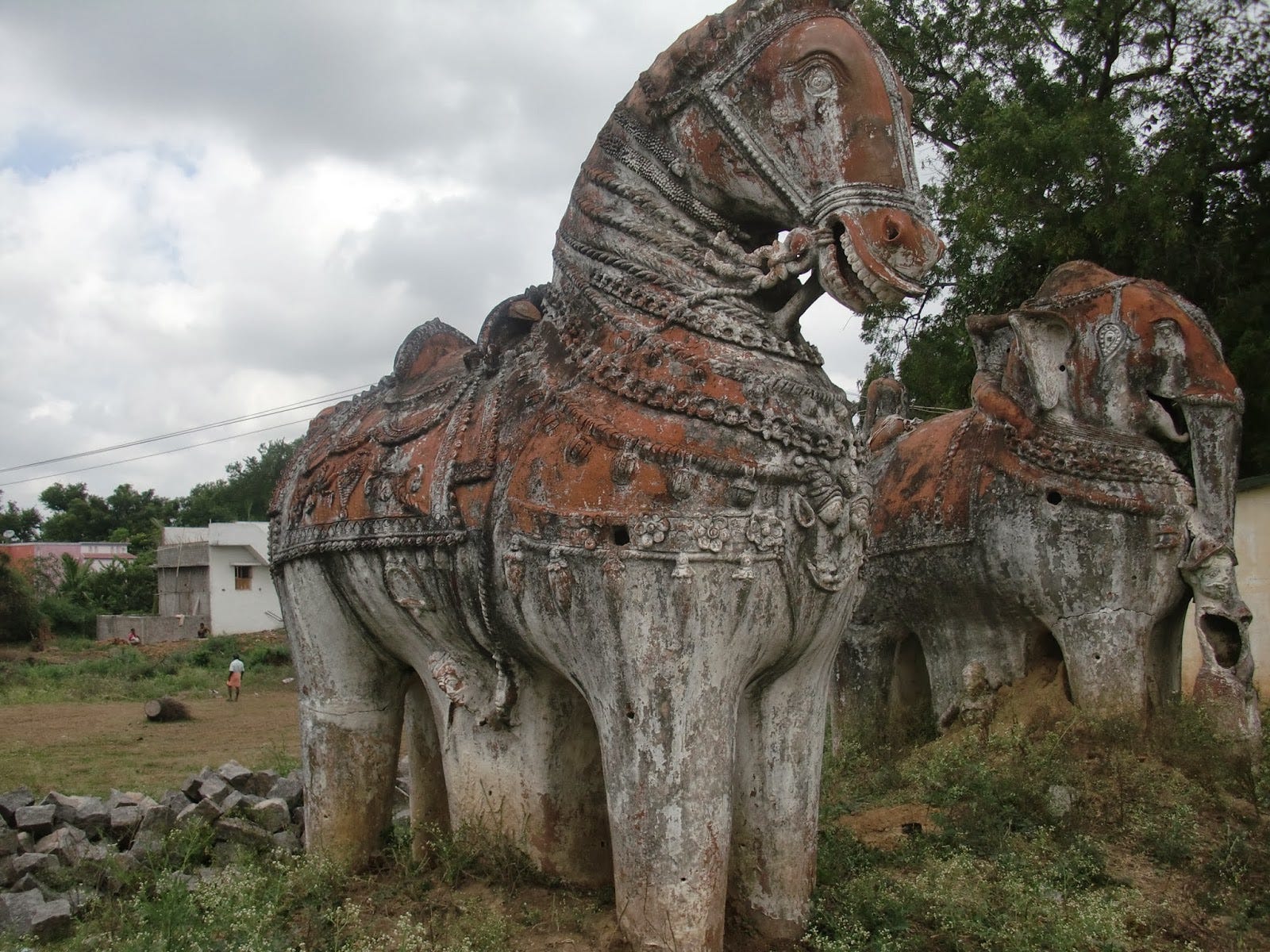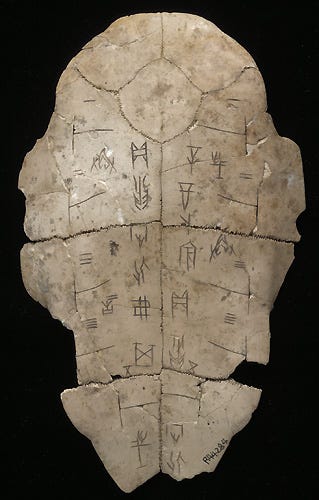Gender-Landscape Reciprocity
The origins of homophobia and misogyny are hiding in plain sight.
Within the humanities it is now understood that a person’s sex is not purely biological but is also culturally created like gender. As James Aho (2002) puts it, private parts are “publicly accomplished” (see also “Making Sex” by Thomas Laqueur, or “Sexing the Body” by Anne Fausto-Sterling).
Likewise, gender is now understood as partially created by physical, universal experiences, or what Christopher Tilley calls “basic bodily dyads,” so we can no longer say it is “purely cultural.” When we review how masculinity and its resulting misogynistic revulsion of the female body is found through daily engagement with basic, sensual dyads such as sky/earth, light/dark, mouth/anus, and dry/wet, we find that every embodied experience, like waking up, taking a shower, walking downstairs, or lying down, is always-already dual and gendered. My theory is that these everyday experiences continually reinforce misogynistic and body-denying tendencies. Once women (and homosexual men) are subconsciously associated with “the below” — a basic bodily experience touching the under-realm of the anus, dirt, disgust, water, moisture, chaos and death — it is easy for them to be feared and hated.
Sky/Earth
Father Sky, Mother Earth. Every animal knows the basic distinction between the sky and the earth, but human knowledge is rooted in the upright postures of the body. Sky is up, earth is down, and up/down has metaphorical significance in a drooping posture, which typically goes along with sadness, sickness, and depression, and an erect, up-right posture is affiliated with health and a positive emotional state. Similarly, consciousness tends to be equated with up and unconsciousness with down.
The horizon line migrates onto our bodies as a belt-line (or in some cases a neck-line), separating “above” from “below.” This is further mirrored in a conceptual framework of public/private. The head contains “noble organs of self presentation which concentrate social identity, the point of honor,” whereas the below contains “its hidden or shameful private parts, which honor requires a man to conceal.”
We can see how this above/below orientation finds its way into “the vertical axis” of the modern, colonial body, as well as in Eastern ideas of “higher chakras” and “lower chakras.” A popular example is given by Freud, who observed that as a boy grows up, the “lower bodily stratum” is regulated or denied by the censoring of lower bodily references along with bodily wastes. This process is further accomplished by the metaphor of the body politic. Stallybrass and White: “In other words, the axis of the body is transcoded through the axis of the city — and while the bodily low is ‘forgotten,’ the city’s low becomes a site of obsessive preoccupation, a preoccupation which is itself intimately conceptualized in terms of discourses of the body.” Updike: “Mouths are noble…they move in the brain’s courts. We set our genitals mating down below like peasants…”
Mouth/Anus
Landscape experiences of sky/earth are also transcoded onto the body within the dyad mouth/anus. These endpoints are crucial in the conceptualization of the disgusting. The mouth becomes associated with the sky, logos, air, light, and the sacred, all gendered masculine and male, and the anus is associated with the earth, the below, dirt, death, and the sexuality of flesh, gendered feminine and female. The anus is the most shamed and shunned area of the male body. It may also be the most censored body part in the media. Consider the outcry over Mapplethorpe’s 1978 Self Portrait, and how the word ‘asshole’ carries with it a complex social context. Maybe this is why Kundera says, in The Unbearable Lightness of Being (2004) that “Shit is a more onerous theological problem than is evil.” To contain these fears, men have construed their bodies as closed, dry, and clean. The excreting body is not theirs but belongs to women: open, dirty, dangerous and disgusting.
Disgust, being an “aversion emotion,” connects with fear and hatred. James Aho, in exploring orifice phenomenology, brings attention to the concept “unclean,” which in Portuguese is imundo, referring to “what lies outside the common everyday world.” Likewise, “dirt,” writes Mary Douglas, is “matter out of place.” Orifices and their effusions are experienced as unclean or other worldly, extraordinary, unbelievable, impossible. “Consider the vagina,” writes Aho. “How, it might be asked, can blood, urine, and human life — three not only different but completely contradictory things — all come from the same aperture on a woman’s body? Impossible!” Aho’s examination of orifice experience also underscores the metaphorical significance of holes. “In prison, the ‘hole’ is where the most despicable criminals are thrown. A squalid, dingy residence is judged a ‘hole.’ A ‘hole’ in one’s argument is a gap, a weakness…The death of a loved one invariably leaves a ‘hole’ in one’s heart. A hole, in other words, is a not. It is an absence of being.” I will spend the remainder of this essay exploring various reasons why women’s bodies are pulled into association with holes, filth, trash, dirt, and terrifying death.
Dry/Wet
Pierre Bourdieu points out in The Logic of Practice that sky and earth logically relate to light and dark, which touch the experience of day and night, hot and cold, and dry and wet. In his book Male Fantasies, historian of fascist masculinity Klaus Theweleit uncovers how misogyny is driven basically by a fear of dissolving boundaries, and the reactive need to affirm the male body’s hardness, dryness, and invulnerability. There is a need to distinguish air from water, stone from mud, containment from chaos. Theweleit focuses on proto-Nazi fascist boy’s habit of associating women with wetness and oceanic energy. We can see this association in mermaids, nymphs, Elaine Morgan’s Aquatic Ape hypothesis, and so on. Women are flowing rivers and oceans, and a similar metaphor used for flowing money tells us about the coded languages that further conceptual differentiations that legitimize misogyny. Theweleit points out that this archetype is smuggled into cartoons, like when they gave hypercapitalist Uncle Scrooge the ability to swim around in his reservoir of gold treasure as if it were water.
One reality about water (and woman) is that it is essential to all life. It is also endlessly transmutable, moving readily from one shape to another: from ice to stream to rain, it exists in all shapes and sizes. Pioneering water researcher, Theodor Schwenk, considers water the mediator between earth and sky, as well as a potent archetypal model for the flow of time itself. “There is such unlimited movement in this sheath of water encompassing the earth that on a global scale it can be regarded as an organ mediating between earth and cosmos, integrating the earth into the course of cosmic events and enabling it to take part in these events.”
Men depend on water, but too much water (as in a deluge), or not enough water (as in a drought), kills. One of the most compelling sensory experiences a body can have is immersion in water, which can be fearful and/or highly pleasurable. Oceanic womb fantasy can quickly turn into a terrifying deluge myth.
The experience of dry and wet touches the more foundational perceptual scheme above/below also because water travels downwards, and the driest places are always up high. So we can see how natural processes such as rivers, oceans, floods and swamps are associated with the moisture and slime occurring on bodies, especially the orifices ‘down below.’
The disgust and fear which men experience when confronting body fluids may derive from a perception of them as waste, as substances cut off from the life of the body and therefore on the road to decay if not already decaying. Being actually or potentially contaminated, these emissions have the power to cause decay, sickness and death. Duke University’s Elizabeth Grosz (1994) explains: “Body fluids attest to the permeability of the body, its necessary dependence on an outside, its liability to collapse into this outside (this is what death implies), to the perilous divisions between the body’s inside and its outside.” They reflect “a certain irreducible ‘dirt’ or disgust, a horror of the unknown or the unspecifiable that permeates, lurks, lingers, and at times leak out of the body, a testimony of the fraudulence or impossibility of the ‘ clean’and ‘ proper’ . They resist the determination that marks solids, for they are without any shape or form of their own. They are engulfing, difficult to be rid of; any separation from them is not a matter of certainty, as it may be in the case of solids. Body fluids flow, they seep, they infiltrate; their control is a matter of vigilance, never guaranteed.”
Theleweit describes how the swamp, within Nazi fascist male fantasies, symbolizes the flowing, wet world associated with women. Waters and swamps can absorb objects without changing in the process: after an object sinks in, their surface becomes calm again. They are penetrable, the impressionable medium par excellence, but can also trap and destroy. “In other words, they are remarkably alive; they can move autonomously, fast or slow, however they wish.” Swamps, like quicksand, are solid and liquid at the same time — and this “hybrid” or “impure” condition, alongside their capacity for killing, made them very well suited as “displaced” designations for danger and the forbidden. This attribute of closing back up and leaving no trace invites the presence of hidden things, things from secret realms, from the domain of the dead. Since swamps became peaceful again afterwards, you cannot tell how dangerous they are, so it is easy for them to be seen as embodiments of deceptiveness.
The feminization of moisture and fluids is continually frustrating because men’s bodies are filled with fluids. Nevertheless, “at some point, his bodily fluids must have been negativized to such an extent that they became the physical manifestations of all that was terrifying…” James Aho: “If sexual organs are dirty, it is clear who is responsible for their distentions and effusions: She is.” Moist places and any area that produces foul smells, according to Aurel Kolnai, are “pregnant with death,” and are therefore avoided or disposed of by any sensible, ethical man.
Holiday and Hassard (2001): “Since women are already cast as having uncontrollable bodies, this allows for a degree of flexibility in embodiment; on the other hand, the controlled bodies of men prohibit any slippage.” Identity is found through difference, so the male body is understood as closed anatomically (dry and clean), and this helps men become closed relationally (not dependent on others). As a self-sufficient universe, as a dry, stone phallus, the closed male body is not part of a network of relationships “but remains arrested in narcissistic awe”, hence, it is not responsible to others. A body that is perceived as not wet and excreting cannot relate to other wet and excreting bodies. We find the narrative again and again of western culture’s persistent effort to position women (and feminine men) as the antithesis of the male body. Women are fluid; men are not. They are dirty; we are not.
Our personal geographies and bodily experiences of the sky/earth landscape are what Thomas Csordas calls “the existential ground of culture and self,” and are therefore a valuable starting point for their analysis. Genitals and their discharges are symbolic of chthonic forces, real and imagined. The above/below duality that all upright bodies experience correlates with male/female archetypes not only due to historically situated cultural constructions, or to institutional, patriarchal religions and agendas, but also to material, bodily conditions. Rather than reifying modern sex-roles and gender differences, this realization that gender is material uncovers what we can call “gender-landscape reciprocity” and helps us to understand how truly gendered phenomena are before they even reach consciousness. By keeping an eye on how these subtle structures of association color our experience, we can transcend them, reducing misogyny and homophobia within ourselves. “Realization and liberation are simultaneous.”


